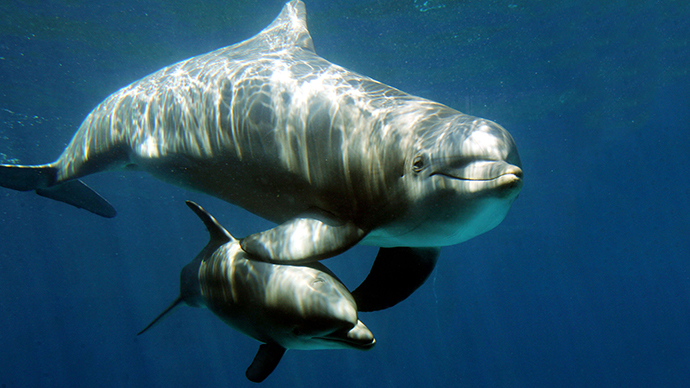US investigates mass death of dolphins

Stranded dolphins are washing up along the East Coast from New Jersey to Virginia, with 124 deaths reported since July. With an alarming death rate seven times higher than usual, federal investigators have declared it an “unusual mortality event.”
When dolphins are stranded on beaches, they are unable to swim back into the ocean. Helpless, the creatures often die within a few hours. Dolphins occasionally find themselves stranded if they are old, sick, injured or disoriented. But an unusually high number of bottlenose dolphin carcasses have been found along the East Coast this past month, and federal scientists are investigating the mysterious deaths, the National Oceanic and Atmospheric Administration’s Fisheries Service announced.
During August alone, 28 bottlenose dolphins died along the shores of the East Coast, and the other 96 carcasses were found in July. All but seven of the dolphins were already dead when they were discovered, but the survivors died shortly thereafter or were beyond saving and had to be euthanized. Most of the strandings occurred at heavily populated beaches at the Chesapeake Bay.
“All age classes of bottlenose dolphins are involved and the strandings range from a few live animals to mostly dead animals with many very decomposed,” the agency announced on its website.
The federal agency says that harmful algal blooms, infectious viruses, pollutants, human-made runoff, and injuries from ship strikes can all instigate dolphin strandings, but the NOAA not yet determined a cause. By declaring an “unusual mortality event”, federal scientists will receive additional funding for their research into the die-offs.
Previous die-offs of dolphins and seals were sometimes linked to morbillivirus infections, a highly infectious disease that causes symptoms resembling measles. One of this summer’s stranded dolphins appeared to be suffering from morbillivirus, but investigators have not drawn any conclusions.
Since 1991, federal scientists have declared 60 unusual mortality events, but this summer’s die-off is significantly larger in scale – and scientists suspect that many more dolphins may have died, but never washed up on shore.
“This is the highest number that we have had for this time of year since 1987,” Susan Barco, research coordinator for the Virginia Aquarium & Marine Science Center, told USA TODAY. During the 1987-88 strandings, more than 740 bottlenose dolphins died of morbillivirus and algae toxins from New Jersey to Florida, and a number of humpback whales carcasses were also found. But of the 60 unusual mortality events declared in the past two decades, scientists have only been able to determine causes for 29 of them.
But Teri Rowles, National Marine Mammal Stranding Coordinator at the NOAA, told reporters to avoid drawing any premature conclusions regarding the cause of the strandings.
“We’re not saying that this is a morbillivirus outbreak,” she said. “But because of the size of it right now, everybody’s making that link at this point. But that is not a confirmed diagnosis or cause of this event at this point.”












